- take a look at code for
mp_draw.plot_landmarks() it is using matplotlib. Hence a plotly version can be coded
- have done this, this version returns a plotly figure. code I'm sure can be further cleaned up
- animations could be built by building up frames across multiple results
setup
import cv2
import math
import numpy as np
import plotly.express as px
from pathlib import Path
import mediapipe as mp
uploaded = {
Path.home()
.joinpath("Downloads")
.joinpath("thao-le-hoang-v4zceVZ5HK8-unsplash.jpg"): ""
}
uploaded = {str(k): i for k, i in uploaded.items()}
# Read images with OpenCV.
images = {name: cv2.imread(name) for name in uploaded.keys()}
mp_pose = mp.solutions.pose
mp_drawing = mp.solutions.drawing_utils
mp_drawing_styles = mp.solutions.drawing_styles
# Run MediaPipe Pose and plot 3d pose world landmarks.
with mp_pose.Pose(
static_image_mode=True, min_detection_confidence=0.5, model_complexity=2
) as pose:
for name, image in images.items():
results = pose.process(cv2.cvtColor(image, cv2.COLOR_BGR2RGB))
mp_drawing.plot_landmarks(
results.pose_world_landmarks, mp_pose.POSE_CONNECTIONS)

plotly plot_landmarks()
import pandas as pd
import plotly.graph_objects as go
_PRESENCE_THRESHOLD = 0.5
_VISIBILITY_THRESHOLD = 0.5
def plot_landmarks(
landmark_list,
connections=None,
):
if not landmark_list:
return
plotted_landmarks = {}
for idx, landmark in enumerate(landmark_list.landmark):
if (
landmark.HasField("visibility")
and landmark.visibility < _VISIBILITY_THRESHOLD
) or (
landmark.HasField("presence") and landmark.presence < _PRESENCE_THRESHOLD
):
continue
plotted_landmarks[idx] = (-landmark.z, landmark.x, -landmark.y)
if connections:
out_cn = []
num_landmarks = len(landmark_list.landmark)
# Draws the connections if the start and end landmarks are both visible.
for connection in connections:
start_idx = connection[0]
end_idx = connection[1]
if not (0 <= start_idx < num_landmarks and 0 <= end_idx < num_landmarks):
raise ValueError(
f"Landmark index is out of range. Invalid connection "
f"from landmark #{start_idx} to landmark #{end_idx}."
)
if start_idx in plotted_landmarks and end_idx in plotted_landmarks:
landmark_pair = [
plotted_landmarks[start_idx],
plotted_landmarks[end_idx],
]
out_cn.append(
dict(
xs=[landmark_pair[0][0], landmark_pair[1][0]],
ys=[landmark_pair[0][1], landmark_pair[1][1]],
zs=[landmark_pair[0][2], landmark_pair[1][2]],
)
)
cn2 = {"xs": [], "ys": [], "zs": []}
for pair in out_cn:
for k in pair.keys():
cn2[k].append(pair[k][0])
cn2[k].append(pair[k][1])
cn2[k].append(None)
df = pd.DataFrame(plotted_landmarks).T.rename(columns={0: "z", 1: "x", 2: "y"})
df["lm"] = df.index.map(lambda s: mp_pose.PoseLandmark(s).name).values
fig = (
px.scatter_3d(df, x="z", y="x", z="y", hover_name="lm")
.update_traces(marker={"color": "red"})
.update_layout(
margin={"l": 0, "r": 0, "t": 0, "b": 0},
scene={"camera": {"eye": {"x": 2.1, "y": 0, "z": 0}}},
)
)
fig.add_traces(
[
go.Scatter3d(
x=cn2["xs"],
y=cn2["ys"],
z=cn2["zs"],
mode="lines",
line={"color": "black", "width": 5},
name="connections",
)
]
)
return fig
try it
plot_landmarks(
results.pose_world_landmarks, mp_pose.POSE_CONNECTIONS)


